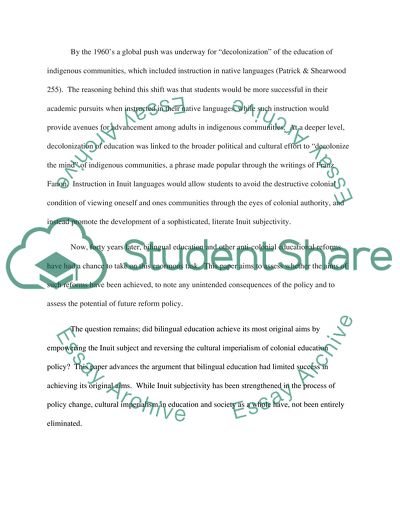Cite this document
(Assessing Bilingual Education in Nunavut; Has Mother Tongue Research Paper, n.d.)
Assessing Bilingual Education in Nunavut; Has Mother Tongue Research Paper. Retrieved from https://studentshare.org/education/1744674-inuit-education
Assessing Bilingual Education in Nunavut; Has Mother Tongue Research Paper. Retrieved from https://studentshare.org/education/1744674-inuit-education
(Assessing Bilingual Education in Nunavut; Has Mother Tongue Research Paper)
Assessing Bilingual Education in Nunavut; Has Mother Tongue Research Paper. https://studentshare.org/education/1744674-inuit-education.
Assessing Bilingual Education in Nunavut; Has Mother Tongue Research Paper. https://studentshare.org/education/1744674-inuit-education.
“Assessing Bilingual Education in Nunavut; Has Mother Tongue Research Paper”, n.d. https://studentshare.org/education/1744674-inuit-education.


